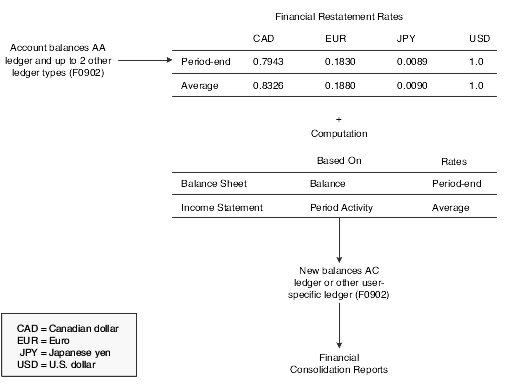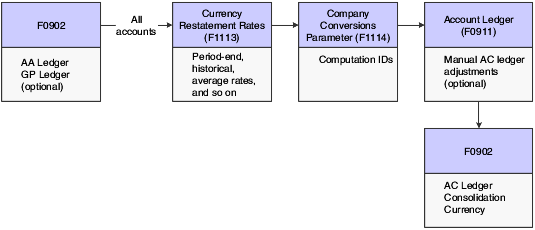Understanding Balance Restatement
If the organization has companies operating in more than one country, you might have to consolidate financial reporting among the different companies. To consolidate financial reporting, you have to restate existing company balances into one common currency. You can use detailed currency restatement balance restatement to restate amounts into one currency. However, for balance restatement, the system restates the amounts in the consolidation ledger (AC) or other user-specified ledger type at the balance level, thereby creating fewer records.
You might use balance restatement to:
Restate balance sheet accounts at the period-end rate and income statement accounts at an average rate prior to generating consolidated financial reports. For example, you can restate subsidiary company accounts into the parent company currency for consolidated reporting.
Combine amounts from up to three different ledgers into one ledger. For example, you can restate the AA (actual amounts) and GP (GAAP adjustments) ledgers into the AC (consolidation) ledger.
Restate accounts for what if budget analysis. For example, you can specify a budget rate that is different from that used in the accounting books for internal comparison purposes.
This method of currency restatement restates balances into a single currency for consolidated reporting purposes.

This diagram shows the AC ledger and the tables used for balance restatement:

Balance restatement uses the F0911 table if you enter manual journal entries in the AC ledger for adjustments. You can set a processing option to specify whether to include the F0911 adjustments when you run the Compute Balance Restatement program (R11414A).